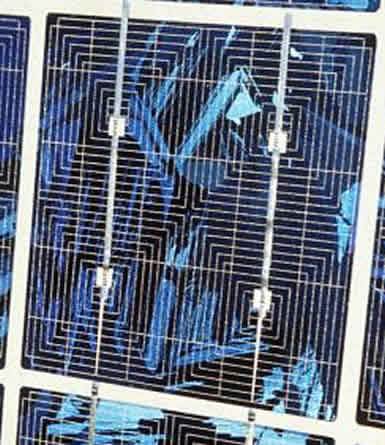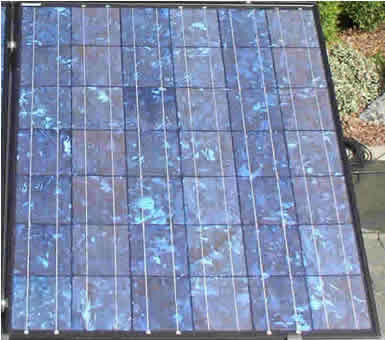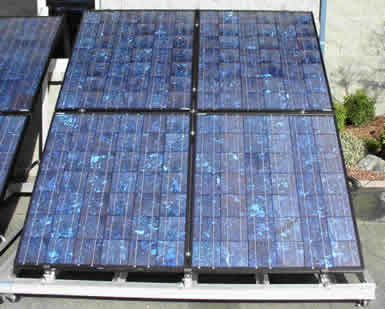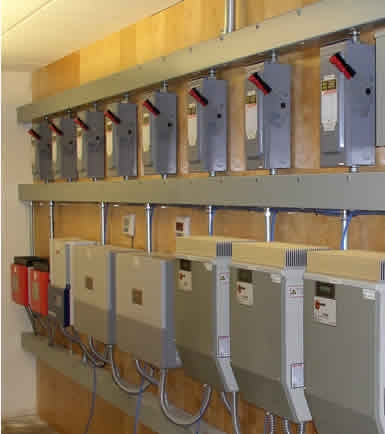Photovoltaics basics
Solar cells can be thought of as solar batteries because they act much like car batteries except they use sunlight instead of chemical energy to produce electricity. Solar cells are technically named photovoltaic cells because they change light (or in Greek, photo) into electricity.
Grid-tied PV system
To connect the system to the utility grid requires an inverter that changes the direct current (DC) produced by the solar panels to alternating current (AC) that we find in the outlets in our home. A photovoltaic system consists of one or more arrays connected together and mounted on a roof or any other support structure, along with the necessary switch gear, inverter, and control equipment, usually mounted on a wall in the garage. The solar systems connected to the utility grid are called grid-tied PV systems. For houses that are not connected to the utility grid solar arrays is connected to a charge controller, batteries, and an optional inverter. These stand-alone systems are used to supply electricity when a utility connection is too expensive.
Miscellaneous facts about PV systems
Orientation: It is not necessary to have the system utilizing the optimum tilt and direction. Systems that are oriented generally south and on a 4/12 pitched roof (18.5 degree tilt) or steeper produce at least 95% of the electricity of an optimally oriented system (see contour performance plots).
Below: a solar cell.

Below: a solar panel.

Below: a solar array.

Below: inverters.

© 2022, UO Solar Radiation Monitoring Laboratory.
|
Top of page Site map |
Home page Search |
Sponsors Contact us |
Home page URL: solardata.uoregon.edu
